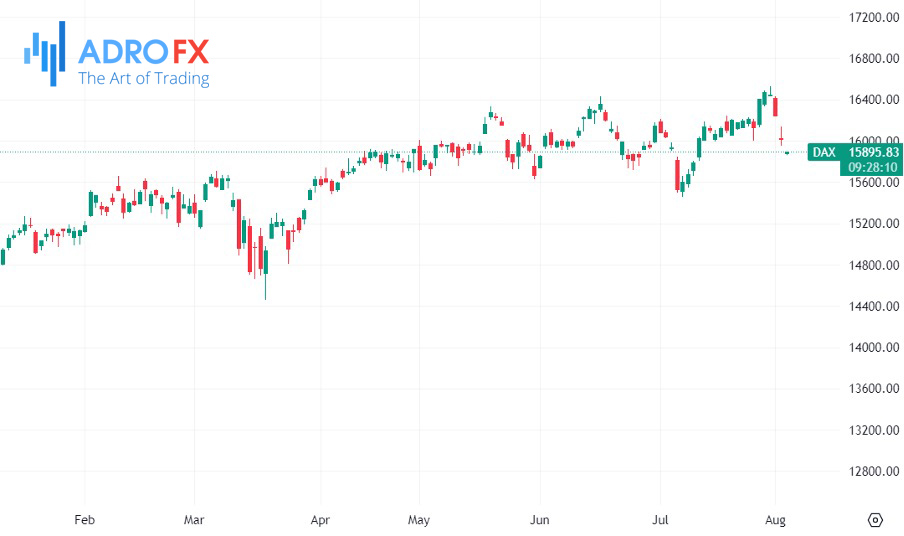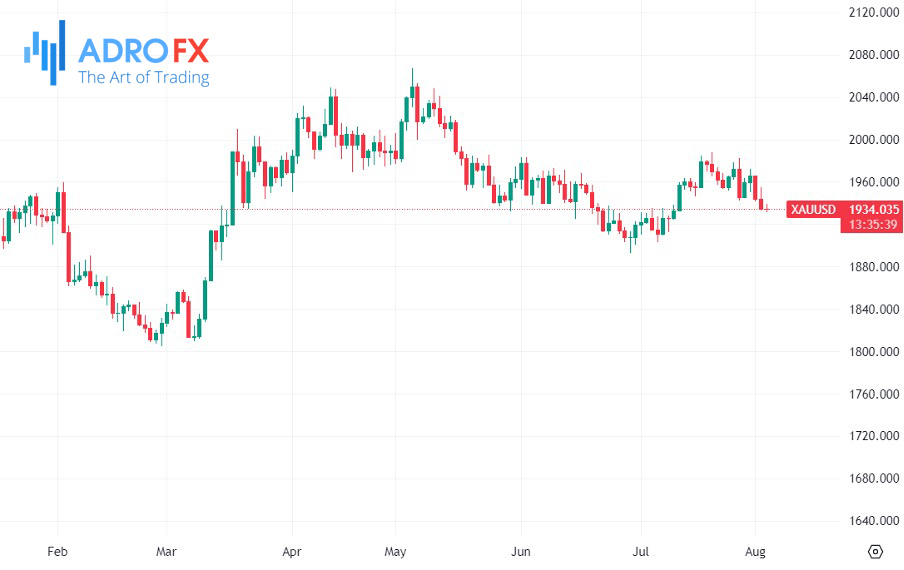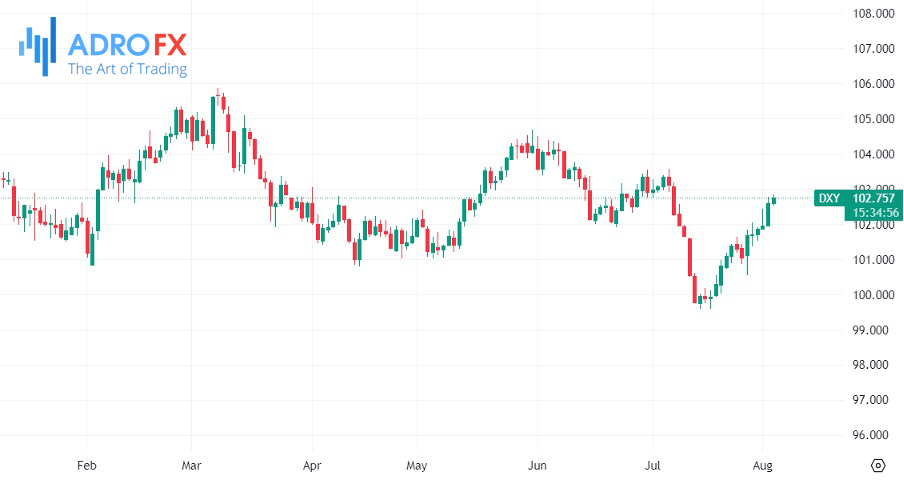Global Markets React to Economic Concerns and Fed's Rate Hike Speculations as Gold Prices Decline | Daily Market Analysi

Key events:
- UK - BoE Interest Rate Decision (Aug)
- USA - Initial Jobless Claims
- USA - S&P Global US Services PMI (Jul)
- USA - ISM Non-Manufacturing PMI (Jul)
Yesterday, European markets experienced another day of declines, primarily driven by concerns surrounding weaker-than-expected economic activity. This, in turn, has raised worries about potential earnings growth in the second half of the year. Adding to the negative sentiment, a credit rating downgrade for the US by Fitch further fueled profit-taking, especially after the recent record highs seen in the DAX.

In the US, markets also faced a negative session, with the Nasdaq 100 enduring its most significant downturn since February. During this period of uncertainty, the US dollar acted as a safe-haven asset, and the yield curve showed signs of steepening.
The ongoing sell-off in the US markets, along with weakness in Asian markets, is likely to have a ripple effect on European markets, leading to a lower opening today.
As of the latest update, Dow Jones futures and Nasdaq 100 futures were up by 0.2%, while S&P 500 futures showed a slight increase of 0.1%.

In July, private payrolls in the United States experienced growth, with an increase of 324,000 jobs. Although this figure was lower than June's 455,000, it surpassed economists' expectations of 189,000.
Despite the positive private jobs report, some economists maintain their belief that the labor market is gradually slowing down as the impact of the Federal Reserve's rate hikes begins to permeate the economy.
Although the US labor market still has progress to make before reaching normal conditions, each step taken in the right direction is encouraging and suggests that earlier policy actions aimed at slowing down the economy and labor market to restore price stability are having the intended effect.
The Pound Sterling (GBP) is currently experiencing a two-day losing streak, as investors exercise caution ahead of the Bank of England's (BoE) interest rate decision. The GBP/USD pair is under pressure due to a bearish market sentiment and concerns about a potential deep recession in the United Kingdom, especially as the central bank prepares for its 14th consecutive interest rate hike.

Investors have mixed opinions regarding the pace at which the BoE will raise interest rates. In the United Kingdom's economy, inflationary pressures are the highest among the G7 nations, and households are grappling with a significant squeeze on their real income. If the BoE considers implementing a substantial interest rate hike, it could have a dampening effect on the economic outlook.
Meanwhile, gold prices experienced a decline on Thursday and faced significant losses for the week due to concerns over a robust US economy and job market, which heightened fears of rising interest rates.

Over the past two days, the price of gold dropped by nearly $30, and December futures moved further away from the crucial $2,000 per ounce level. The market reacted to data indicating that private payrolls had grown significantly more than expected in July, boosting the dollar and raising concerns about a strong labor market ahead of the official nonfarm payrolls data, which is scheduled for release on Friday. The strength of the dollar impacted most metal prices, pushing them lower.

Despite a downgrade to the US sovereign rating by Fitch, gold saw limited safe-haven demand, as analysts suggested the move would have minimal actual impact on financial markets. The rise of the dollar persisted, supported by much stronger-than-expected payrolls data from ADP, coupled with signs of a US manufacturing and construction recovery earlier in the week.
Investors now anticipate the Federal Reserve having enough economic headroom to continue hiking interest rates, which may adversely affect gold and metal markets. Rising interest rates increase the opportunity cost of holding gold, and investors may prefer the dollar as a safe haven over gold in such a scenario.
Looking ahead to Thursday's trade, investors will closely monitor weekly jobless claims, preliminary nonfarm productivity data, as well as the Markit and ISM services PMIs, seeking further insights into the state of the economy and labor market.









